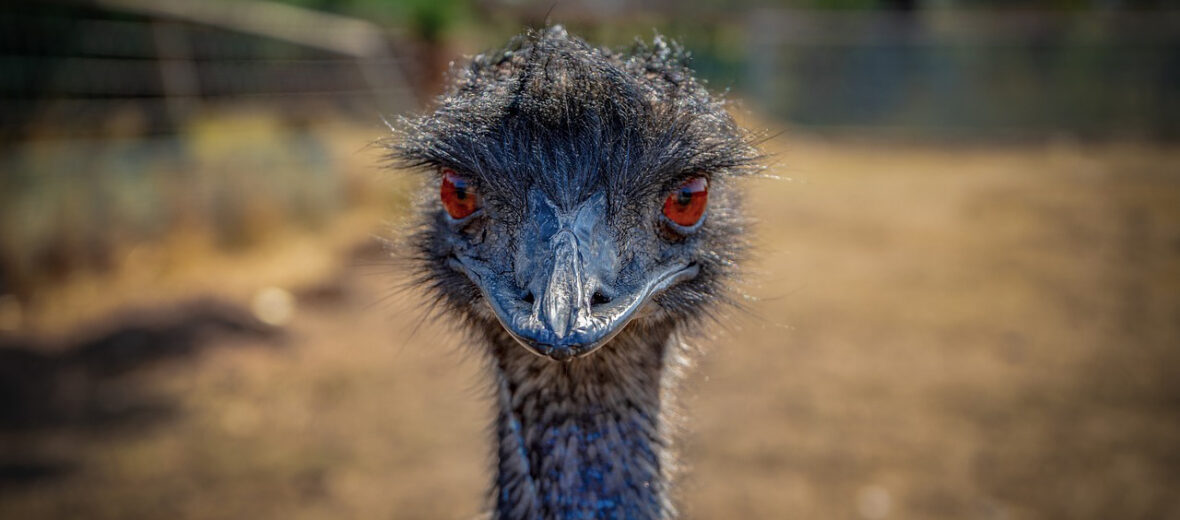
Being second isn’t always bad. Especially when you’re the second largest bird in the world, next to the ostrich! The emu is a flightless bird, but don’t let that fool you. They are far from defenseless. They descend from the dinosaur era, so they know how to survive. They are fast, they have a sharp beak, and boy can they kick! With an estimated population of over 725,000, these birds are listed as Least Concern by the IUCN.
First the Stats…
Scientific name: Dromaius novaehollandiae
Weight: Up to 132 lbs.
Height: Up to 6.2 feet
Lifespan: Up to 20 years
Now on to the Facts!
1.) An emu is typically a solitary animal but will herd if there is an abundance of food available.
2.) Emus are omnivores (eats both plant and animal matter). They also eat small stones to aid in grinding their food up, which speeds up digestion.
3.) The emu can run up to 30 mph!
4.) Believe it or not, emus are good swimmers, able to cross rivers to get to food or find shelter.
5.) Humans, crocodiles, and wild dogs will sometimes hunt emus but, other than that, they have no other predators.
But wait, there’s more about the emu!
6.) They have a special pouch in their throat that’s used for communicating. When the pouch is inflated, the emu can make deep grunting, booming, and drumming noises. These sounds can usually be heard during the breeding season.
7.) Emus have good eyesight and hearing, which allows them to detect danger at a decent range.
Did you know…?
The sounds made by an emu can be heard up to 1.2 miles away!
8.) The female can lay between 8 – 10 eggs when in season; which is typically summer. However, since the eggs are so large, she will only lay 1 egg every 2 – 3 days.
9.) Emu eggs are a dark green to black in color and have a thick shell. They weigh about 1 lb.! The male will sit on the eggs for approximately 8 weeks, until they are ready to hatch. During that nesting time, the male emu will not eat but rather uses stored fats as its source of energy.
10.) An emu’s body contains up to 3 gallons of oil. Emu oil is used in soaps, shampoo, lotions, and other health care products.
But wait, there’s still more about the emu!
11.) Emus are the only bird with gastrocnemiuses (calf muscles).
Did you know…?
Due to their strong leg muscles, emus can leap up to 6.8 feet off the ground!
12.) The emu is not always a pest to farmers. They can be beneficial as well. As they eat caterpillars and grasshoppers.
13.) Emu ranching is popular as their oil and other products can provide a sustainable income.
14.) Their migrations are based on rainfall. They seem to be able to detect where water might be; based on rain clouds, the sound of thunder, and the smell of wet ground.
Now a Short Emu Video!
Also, check out the Critter Science YouTube channel. Videos added frequently!
Want to suggest a critter for me to write about? Let me know here.



